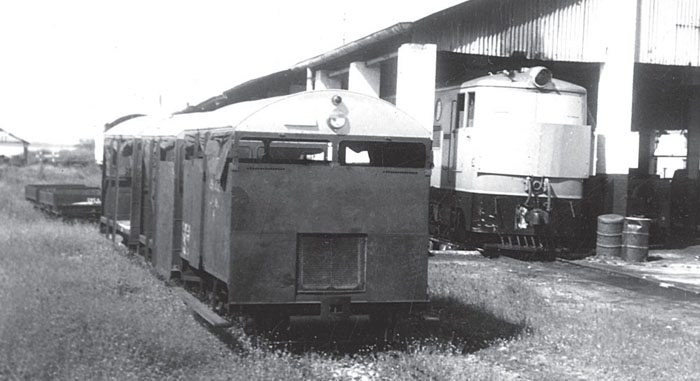
On 30 June 1960 Congo-Léopoldville was declared independent. On 5 July the Force Publique, the former colonial gendarmerie, mutinied and civil unrest broke out, with white civilians coming under attack and many being forced to flee to neighbouring countries. There began a period of instability characterised by murder and rape,1 fuelled by anti-colonialist resentment and tribal rivalries. At the same time the integrity of the country was threatened by the breakaway of Katanga (11 July 1960 to January 1963), with the aid of mercenaries, and of South-Kasaï (20 August 1960 to 30 December 1961), and finally UN Forces intervened to aid Congolese forces in resisting the breakaway of these two provinces.
Maintaining freedom of traffic was vital for the provisional Katangese government, to be able to maintain the flow of copper exports, and for the supply needs of the UN contingents. The rail network (originally built to the metre gauge, but converted in 1955 to 1067mm [3ft 6in] gauge) came under attack, leading to the introduction of armour protection for rolling stock, at first by the railway staff and the remaining Belgian troops, then finally by all the belligerent parties. A Wickham armoured trolley (No 8453 built 1960) had also been acquired prior to independence.

In the station at Kongolo, two trolleys fitted locally with armour protection, using as a base Wickham Type 18 inspection trolleys, six of which had been delivered between 1956 and 1959. Under the shed roof is diesel locomotive Class 200 1-D DH2 with an armoured cab, leaving two observation slits. The gauge on the CFL3 network was 1.067m (3ft 6in).
(Photo: Cegesoma-Bruxelles Collection Ref 280703)
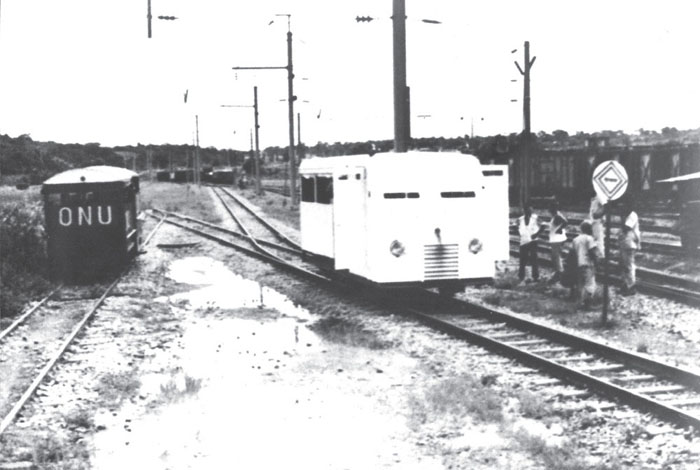
In the centre, a trolley armoured by the workshops of the BCK,4 on the line between Lubudi and Kamina in February 1961. A close examination of the photo suggests that the Wickham on the left is the same as the one in the previous photo.
(Photo: CEDOMI)
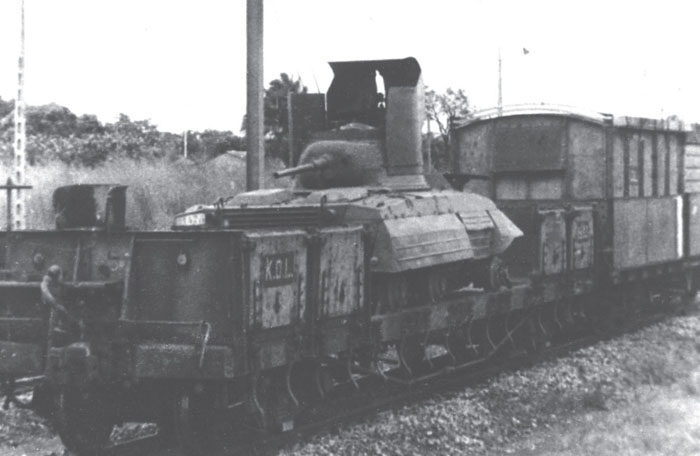
An armoured train used by the Katangan forces, employing an American M8 Greyhound armoured car.
(Photo: Ltc Young, via Denis McCarthy)
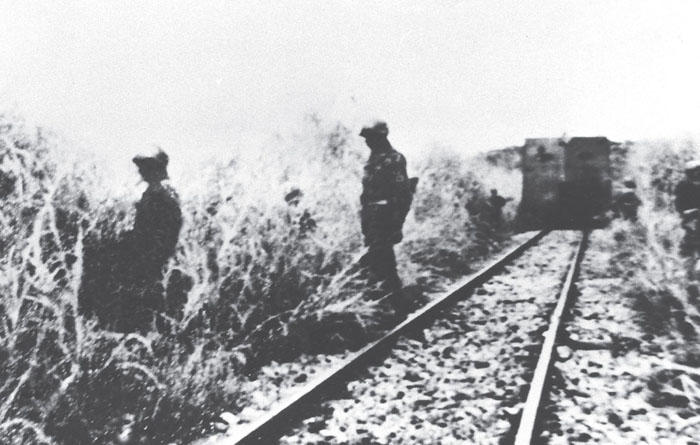
Unidentified armoured trolley, supporting Katangan or Belgian troops ensuring the BCK line is clear.
(Photo: CEDOMI)
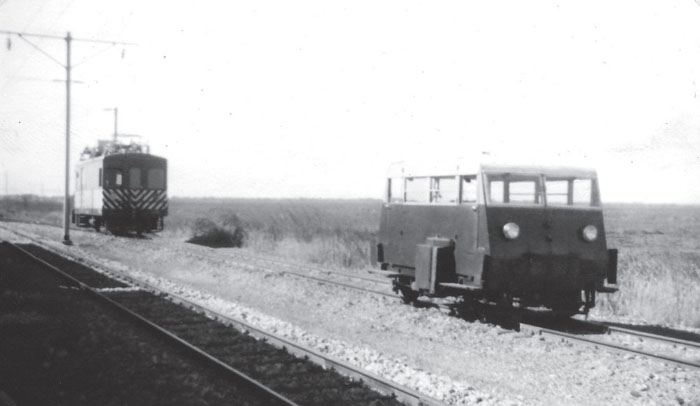
Inspection trolley which formed the basis of the armoured versions, seen here in 1959 between Elisabethville and Kamina.
(Photo: Paul Malmassari Collection)

A photo taken some time in March or April 1961, showing an armoured train during Operation ‘Conga’ on the Kongolo-Kabalo axis.
(Photos: CEDOMI)
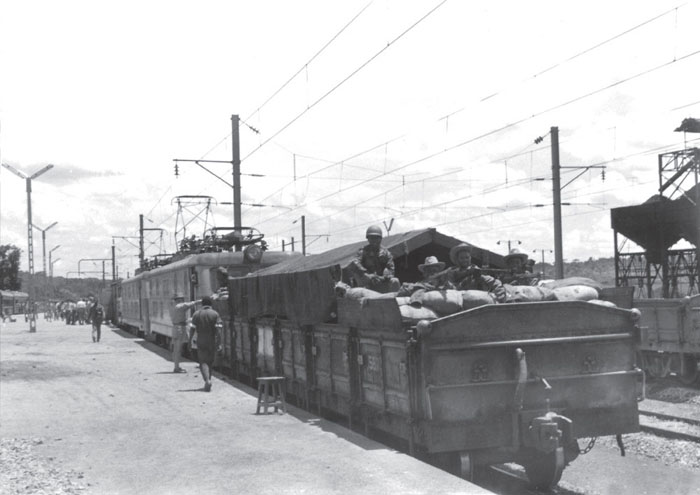
In February 1961, during Operation ‘Banquise’, the railway networks provided rapid deployment and needed protecting: here an armoured wagon is propelled by locomotive 2305 of the KDL,5 seen here in Luena Station. Following this operation, the BCK network which had profited from the heightened security, could henceforth operate without an escort.
(Photo: CEDOMI)
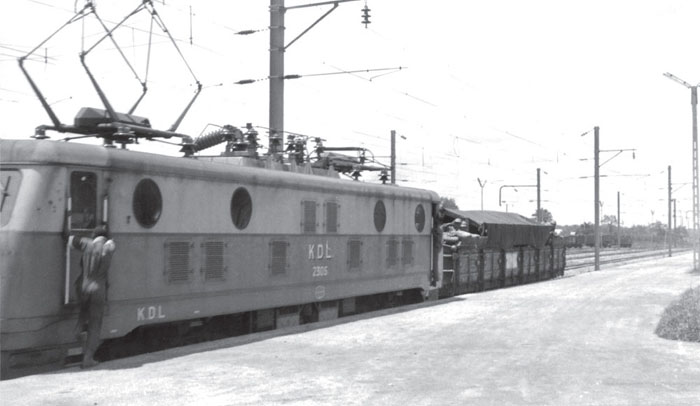
The same units seen from the locomotive end, with No 2305 of the KDL here operating on the BCK lines.
(Photo: CEDOMI)
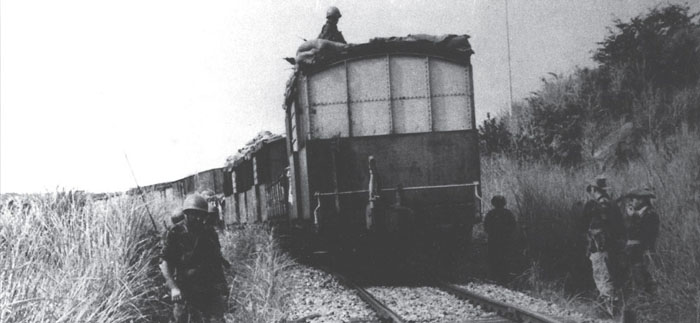
Armoured wagon bringing up the rear of the train on the Benke to Kamina line (Operation ‘Banquise’).
(Photo: CEDOMI)
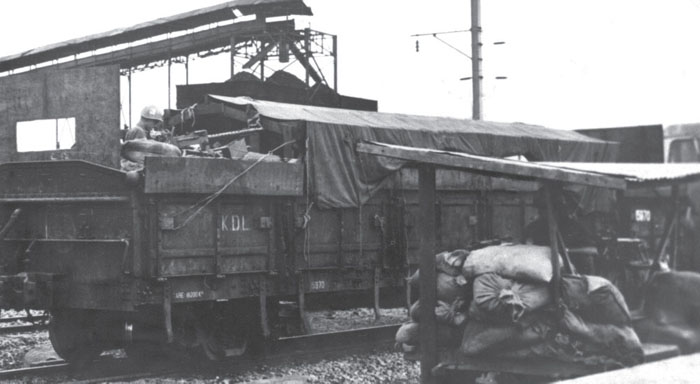
The United Nations intervened6 with contingents of troops from thirty-two nations. Here men of the Swedish contingent are fitting protection to open bogie wagons of the KDL. They were tasked with train protection in August 1960.
(Photo: CEDOMI)
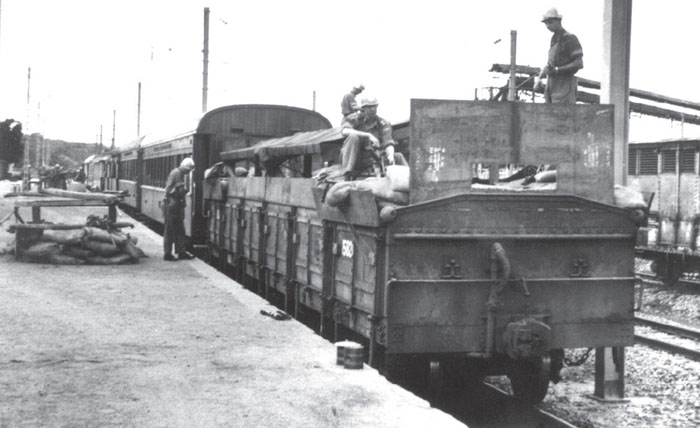
(Photo: CEDOMI)
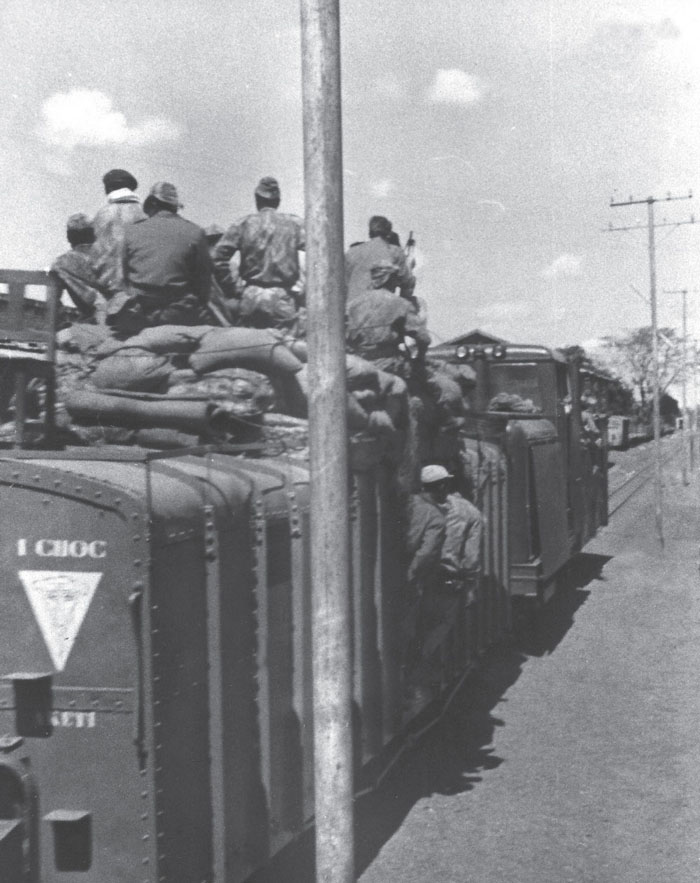
Three photos of the armoured train carrying the 1st Shock Unit (6th Foreign Commando Battalion), bearing the insignia of the ‘Affreux’ (a red devil’s head on a white triangle), which supported Operation ‘Ommegang’7 in November 1964.
(Photo: CEDOMI)
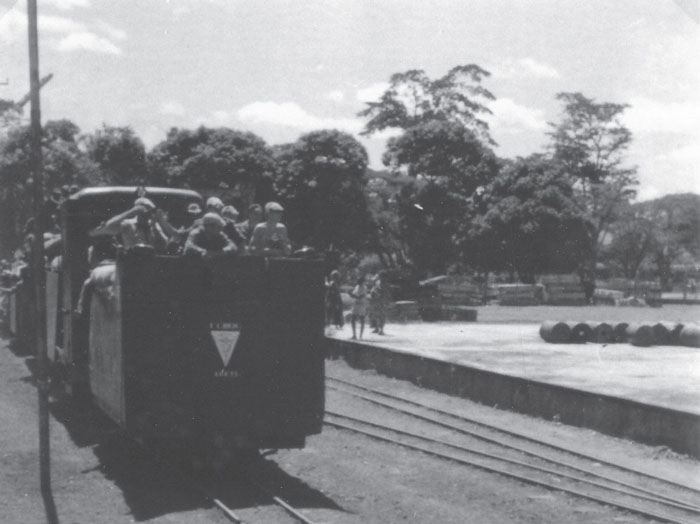
The 6th Battalion was formed of mercenaries commanded by the famous Bob Denard. The 0.615m (2ft) gauge line of the CVC8 appears hardly suitable to carry combat units. The operation was in support of a Belgian battalion, and a parallel movement by a motorised column opening up the road leading to Buta-Aketi, to clear the Simba rebels out of the Upper Congo.
(Photo: CEDOMI)
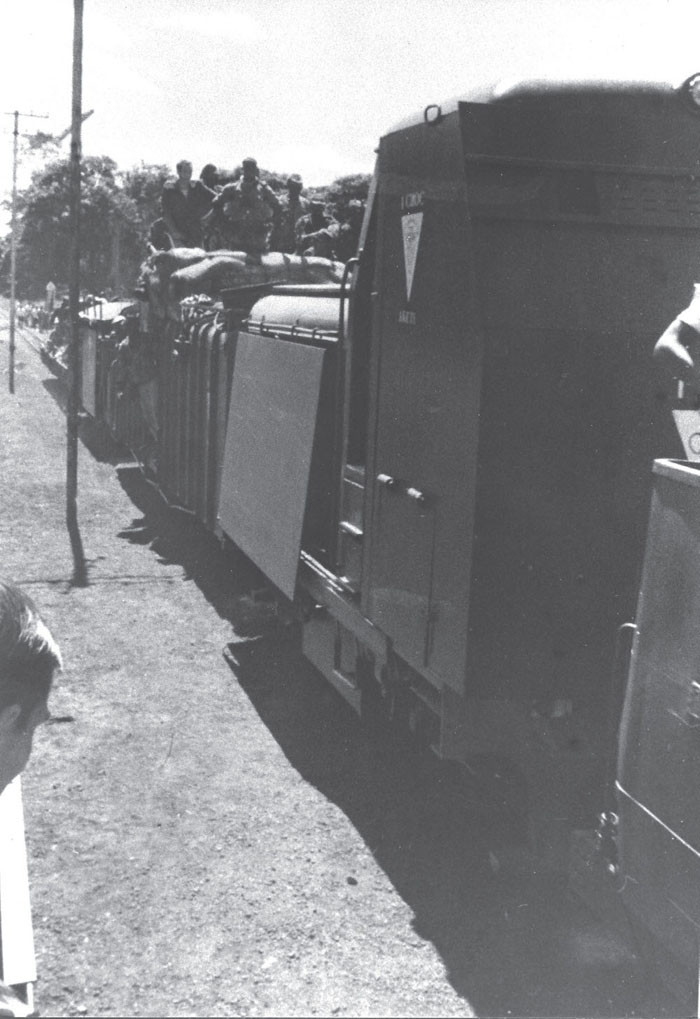
The makeshift protection of the locomotive can clearly be seen in this shot, which is reminiscent of the film The Mercenaries.
(Photo: CEDOMI)
SOURCES:
Blanchart, Charles, Le rail du Congo belge 1945-1960, Volume III (Brussels: Editions Blanchart & Co, 2008).
Malmassari, Paul, Les Blindés de l’ONU (Guilherand Granges: La plume du temps, 2000).
Film The Mercenaries, Director Jack Cardiff, 1968, running time 100 minutes.
1. For descriptions of these dramatic events, see the 1965 novel The Dark of the Sun by Wilbur A. Smith, the 1968 film The Mercenaries, and Chimères noires by Jean Lartéguy, published in 1963 by Presses de la Cité.
2. DH = Diesel-Hydraulic. A locomotive built in Haine-St-Pierre in 1955.
3. CFL = Chemin de Fer des grands Lacs (Great Lakes Railway).
4. BCK = Companie du Bas Congo au Katanga.
5. KDL = Compagnie du Katanga-Dilolo-Léopoldville.
6. ONUC, the United Nations Operation in the Congo, deployed troops to support the Congolese Government from 14 July 1960 to 30 June 1964.
7. In January 1964 the Simba (‘Lion’ in Swahili), rose in revolt, and carried out indescribable atrocities in all the territory they overran. The revolt was crushed in November by Operation ‘Ommegang’ conducted by the Belgian Para-Commando Regiment supported by two columns of mercenaries.
8. CVC = Chemins de fer Vicinaux du Congo.